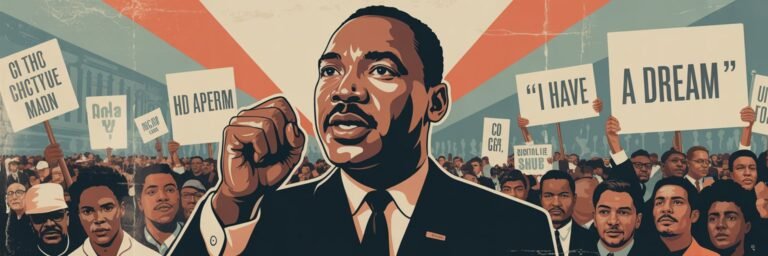INTRODUCTION
Religion and rituals have shaped society since the dawn of civilization. No context in history has been immune to these influences—least of all the domain of warfare. Throughout the ages, various cultures around the world have invoked the divine on the battlefield. Termed as ‘the last refuge of a desperate soldier’, faith has manifested in battles through prayers, sacrifices, and omens. This reflects not only the human need for psychological fortitude in life-and-death situations but also highlights the intrinsic connection cultures maintain with their spiritual roots. This article explores such religious practices and rituals that were historically embedded in military contexts—offering fascinating insights into the human dimension of warfare throughout history.
HISTORICAL BACKGROUND
Starting with the ancient civilizations, religion and warfare were often conflated. In ancient Egypt, for instance, Pharaohs were regarded as gods, and military campaigns were viewed as holy wars. Similarly, Greek armies sought divine favor before engaging in conflict. Homer’s “Iliad” depicts Agamemnon sacrificing his daughter to appease goddess Artemis for success in the Trojan War. Likewise, the Roman legions worshipped Mars, their god of war, believing that their victories signified divine approval.
In Asia, spiritual practices like ancestor veneration penetrated Chinese military tradition. The Japanese samurai, on the other hand, were influenced by both Shinto and Buddhist beliefs. In medieval Europe, Pope Urban II prompted Crusaders with promises of heavenly rewards, leading to centuries of religious warfare against Islam.
THEORIES AND INTERCEPTIONS
Academic interpretations of religion’s role in warfare vary significantly. Sociologist Emile Durkheim suggested that religious rituals serve to consolidate social groups, thereby improving their ability to face collective challenges like warfare. Military historian John Keegan indicated that religious rituals could create a psychological edge, building group solidarity and alleviating individual fear.
Another interpretation by anthropologist Victor Turner proposed that rituals can provide a “liminal” space for warriors, a time-between-times where the ordinary rules of society are suspended, allowing warriors to commit acts considered taboo in peacetime. This theory has been widely applied to understand the practice of ritualistic war dances performed by tribes like the Maori and Zulu.
MYSTERIES AND CONTROVERSIES
Despite the prevalence of religious rituals across numerous historical battles, certain practices are still shrouded in mystery and controversy. The infamous ‘Berserker’ warriors from Norse tradition, who purportedly entered into frenzied, fearless states during battle, are thought to have achieved this through a potent combination of ritual, religion, and possibly hallucinogenic substances, although this is widely debated.
Similarly, the Battle of Tours in 732 AD, where Frankish forces defeated a large Muslim army, has been wrapped in controversy, with some accounts attributing the victory to St. Martin’s divine intervention—again a highly contentious claim given its potential to reframe the narrative of European Christianity’s survival.
SYMBOLISM AND CULTURAL SIGNIFICANCE
Religious rituals in battle often embody deeper cultural significance. For instance, the Aztec warriors performed elaborate pre-battle rites to honor Huitzilopochtli, the god of sun and war. They believed their victories fed the sun’s vitality, a symbolic reflection of their worldview which regarded warfare as cosmically essential.
In indigenous Australian cultures, pre-battle ceremonies were intricately linked with ‘Dreamtime’ beliefs, creating societal harmony by aligning with the ancestral spirit world. Similarly, Islamic jihads and Christian Crusades showcased the struggle for religious identity and dominance, embodying their period’s cultural ethos.
MODERN INVESTIGATIONS
Recent studies continue to investigate the enduring influence of religion and rituals in combat. Psychologist Rona Fields has explored how modern soldiers, notwithstanding their secular backgrounds, spontaneous develop quasi-religious rituals for luck and protection.
In his book “War and the Soul”, Edward Tick highlights the impact of spiritual and ceremonial practices on the mental health of modern-day soldiers, drawing parallels with their historical counterparts.
In addition, advancing archaeological techniques continue to unearth fresh evidence of ancient battle rituals. The recent uncovering of a Celtic warrior’s grave—accompanied by an array of ritual objects—has provided new insights into pre-Roman Gaulish practices.
LEGACY AND CONCLUSION
The legacy of religion and rituals in historical battles extends well into the present day, not limited to battlefield aesthetics but permeating deeper dimensions of military conflict, including strategy, morale, and law. Its impact can be seen in the continued prevalence of chaplains in the military, the psychological preparation of soldiers for combat, and even the emerging field of ‘spiritual fitness training’.
Yet the use of faith in warfare is not an uncontentious issue. It raises deep ethical questions about the manipulation of spiritual beliefs for potentially violent ends and the sanctification of armed conflict. But history offers no easy judgments—only a rich tapestry of human endeavors that attempts to reconcile the dichotomous realms of violence and faith. In conclusion, the intertwining of religion and warfare affirms the complex nature of human society and reminds us that the drama of history is inevitably acted on the stage of deeply held beliefs and ritual practices.






